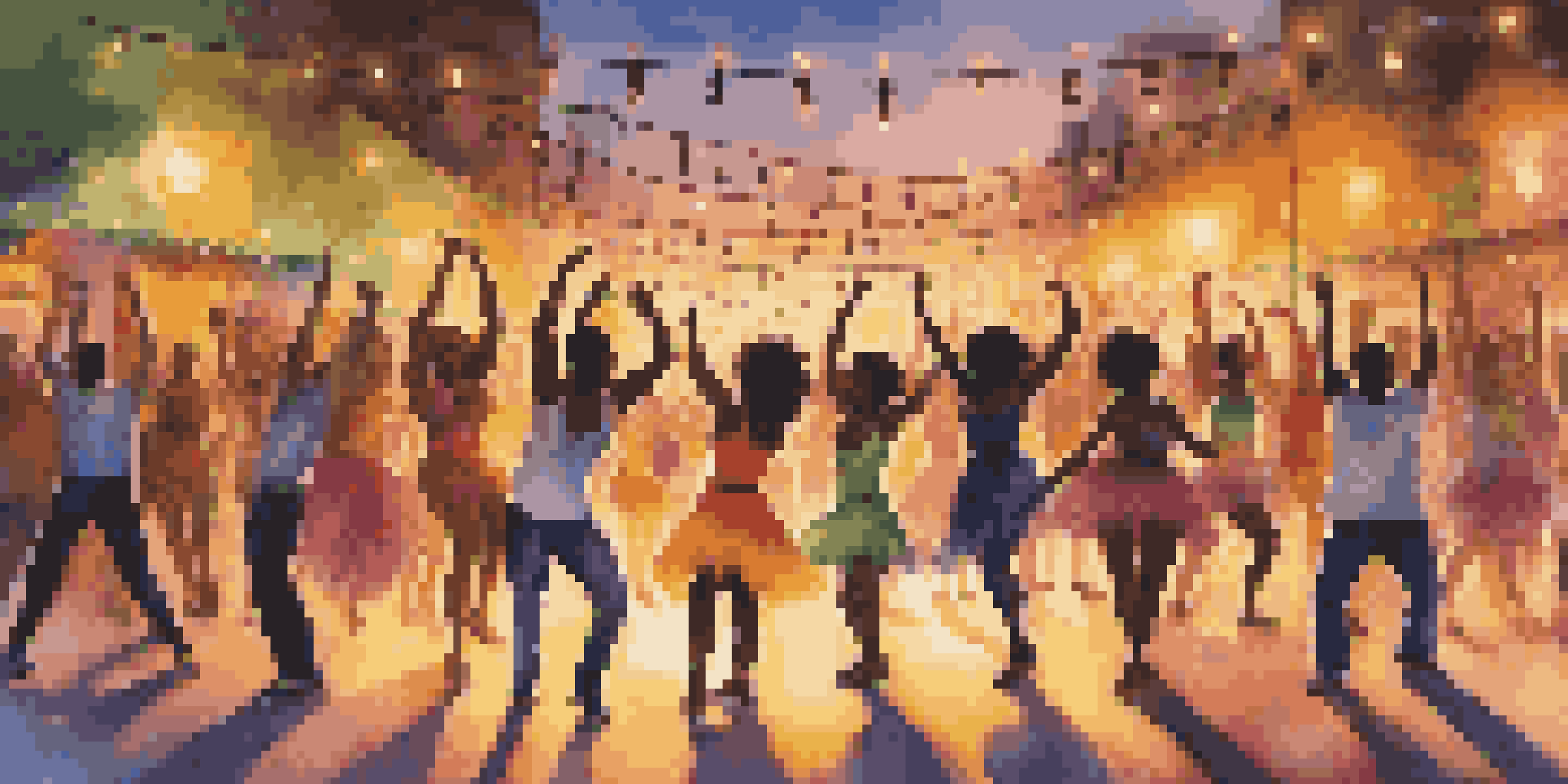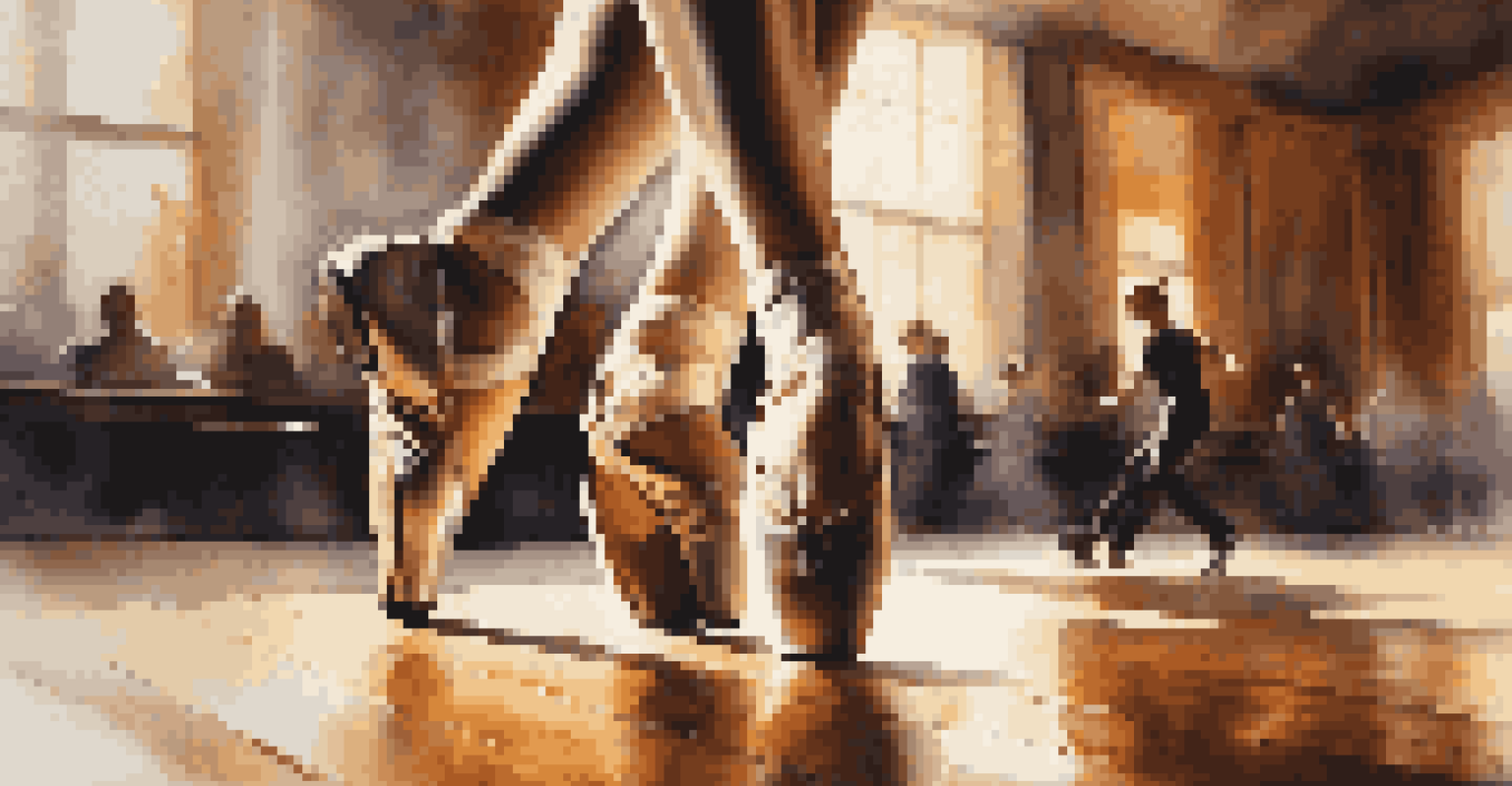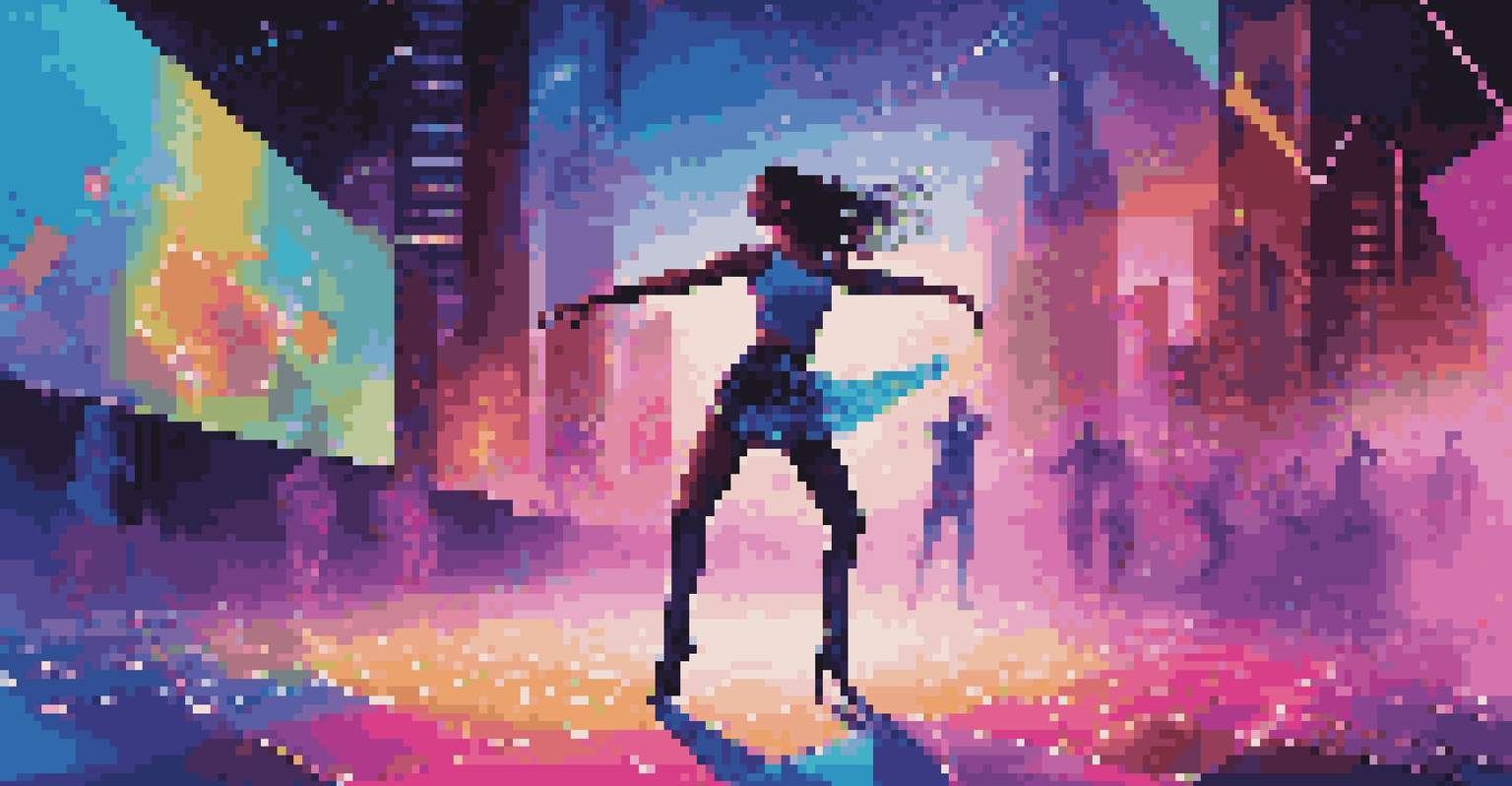Social Media Challenges: New Platforms and Dance Innovations

The Rise of New Social Media Platforms
In recent years, we've witnessed a surge in new social media platforms like TikTok and Instagram Reels that cater to short-form video content. These platforms have revolutionized how we consume and share dance, making it more accessible than ever. With millions of users creating and sharing content daily, trends can emerge overnight, captivating audiences around the world.
Dance is the hidden language of the soul.
This rapid sharing can lead to viral dance challenges, where users replicate a specific dance routine, often set to popular music. The ease of participation has democratized dance; anyone with a smartphone can join in. This shift has created a vibrant community where creativity and inspiration flow freely, encouraging dancers of all skill levels to showcase their talents.
However, navigating these new platforms also presents challenges. Dancers must adapt to ever-changing algorithms and audience preferences, often needing to innovate quickly to stay relevant. This means that while the opportunities for exposure are vast, the pressure to constantly create can be daunting.
Dance Innovations Sparked by Social Media
Social media has also given rise to new dance styles and innovations that reflect contemporary culture. The fast-paced nature of these platforms encourages dancers to blend genres, experiment with techniques, and push creative boundaries. For instance, you might see elements of hip-hop, ballet, and even traditional dance forms coalescing into new, hybrid styles.

Moreover, platforms like TikTok promote the idea of 'dance challenges,' where users create their own choreography to a specific song or theme. This not only inspires creativity but also allows dancers to express their individuality. It’s fascinating to see how a single song can spawn countless interpretations, each unique to the dancer’s personality and background.
Social Media Transforms Dance Culture
Platforms like TikTok have democratized dance, enabling users of all skill levels to create and share innovative dance content.
These innovations are not just confined to the dance floor; they also impact music and fashion trends. Dancers often become influencers, shaping what’s popular in broader culture. Their movements can inspire fashion choices, leading to a cycle where dance and lifestyle continuously influence one another.
The Impact of Viral Dance Challenges
Viral dance challenges can transform an ordinary social media user into a global sensation. A simple 15-second clip can lead to millions of views, likes, and shares, catapulting dancers into the spotlight. For example, the 'Renegade' dance challenge made Jalaiah Harmon a household name, showcasing how quickly talent can gain recognition.
Creativity takes courage.
These challenges often create a sense of community, as participants come together to share their interpretations. It’s not just about the dance itself; it’s about the connection forged through shared experiences. People from different backgrounds and locations can join in and celebrate their love for dance, fostering a sense of belonging.
However, it's essential to remember that not all viral challenges are created equal. Some may lack originality or proper crediting, leading to discussions about ownership and respect in the dance community. This highlights the need for thoughtful engagement, ensuring that creators are recognized for their contributions.
Challenges of Dance in the Digital Age
While social media offers vast opportunities for exposure, it also presents unique challenges for dancers. The pressure to consistently produce engaging content can be overwhelming, leading to burnout. Dancers may feel compelled to prioritize quantity over quality, which can ultimately dilute their creativity.
Moreover, the fast-paced nature of social media can make it difficult to maintain a personal style. With trends changing almost daily, dancers may struggle to stay true to their artistic voice. This tension between authenticity and virality can leave many feeling lost in a sea of content.
Viral Challenges Build Community
Viral dance challenges foster a sense of belonging among participants, allowing people from diverse backgrounds to connect through shared experiences.
Additionally, the global reach of social media means that dancers are constantly under scrutiny. The fear of negative feedback or online trolling can hinder self-expression and stifle creativity. It's crucial for dancers to cultivate a supportive community and focus on creating art for themselves first and foremost.
The Role of Influencers in Dance Trends
Influencers have become key players in shaping dance trends on social media platforms. Their reach allows them to introduce new styles, techniques, and challenges to a vast audience. As they showcase their skills, they also encourage their followers to participate, often resulting in viral dance movements.
However, this dynamic raises questions about influence versus authenticity. It's essential for influencers to recognize the origins of the dances they promote and give credit where it’s due. Building a culture of respect and acknowledgment can foster a healthier environment within the dance community.
Moreover, influencers often serve as role models for aspiring dancers. Their journeys can inspire others to pursue their passion for dance, highlighting that success is achievable. By sharing their experiences, they can help demystify the creative process, encouraging others to take the leap into the world of dance.
Building a Supportive Dance Community Online
Creating a supportive online dance community is crucial in navigating the challenges posed by social media. Dancers can uplift one another by sharing tips, providing constructive feedback, and celebrating each other’s successes. This sense of community can combat feelings of isolation that many dancers experience in the digital age.
Engaging in open conversations about mental health, creativity, and the pressures of social media can further strengthen these bonds. By normalizing discussions around challenges, dancers can feel less alone and more empowered to pursue their art. Ultimately, a supportive community fosters resilience and encourages members to thrive.
Challenges of Content Creation
Dancers face pressure to consistently produce engaging content, which can lead to burnout and a struggle to maintain their authentic artistic voice.
Additionally, platforms can play a role in promoting positive interactions. Features that prioritize creator well-being, such as content guidelines and mental health resources, can help maintain a healthy environment. As the dance community continues to grow online, it's vital to prioritize kindness and collaboration.
The Future of Dance on Social Media
As technology continues to evolve, so will the landscape of dance on social media. Emerging technologies like augmented reality (AR) and virtual reality (VR) could revolutionize how we experience dance, allowing for interactive and immersive performances. Imagine being able to dance alongside your favorite influencer in a virtual space—how exciting is that?
Moreover, as new platforms emerge, the potential for innovative forms of expression will only increase. Dancers will continue to find ways to adapt their skills to new formats, creating unique experiences for audiences. This constant evolution is part of what makes dance so dynamic and engaging.

Ultimately, the future of dance on social media depends on the community itself. By embracing creativity, supporting one another, and staying true to their artistic roots, dancers can shape a vibrant future that celebrates diversity and innovation. The possibilities are endless, and we can’t wait to see what comes next!